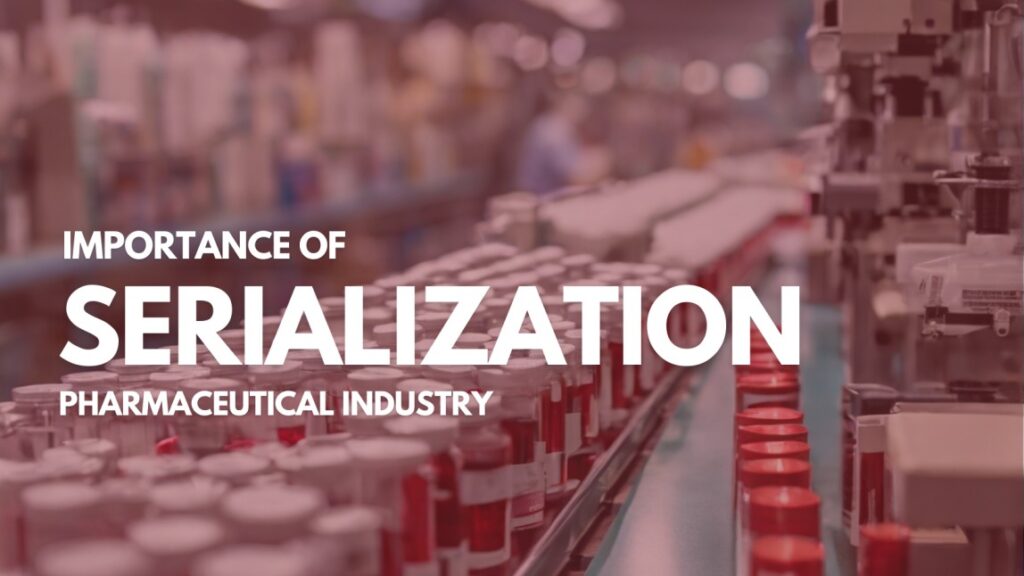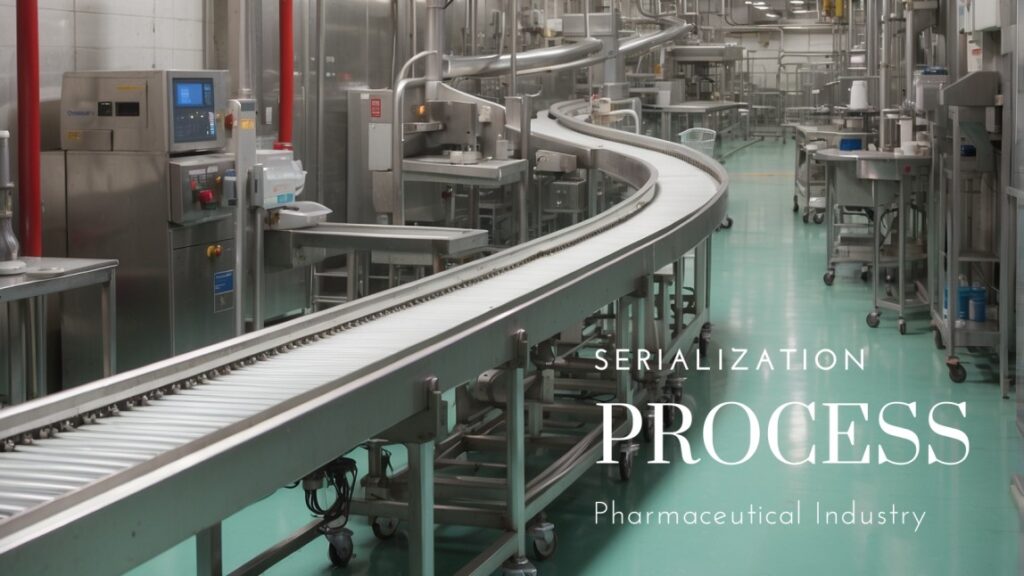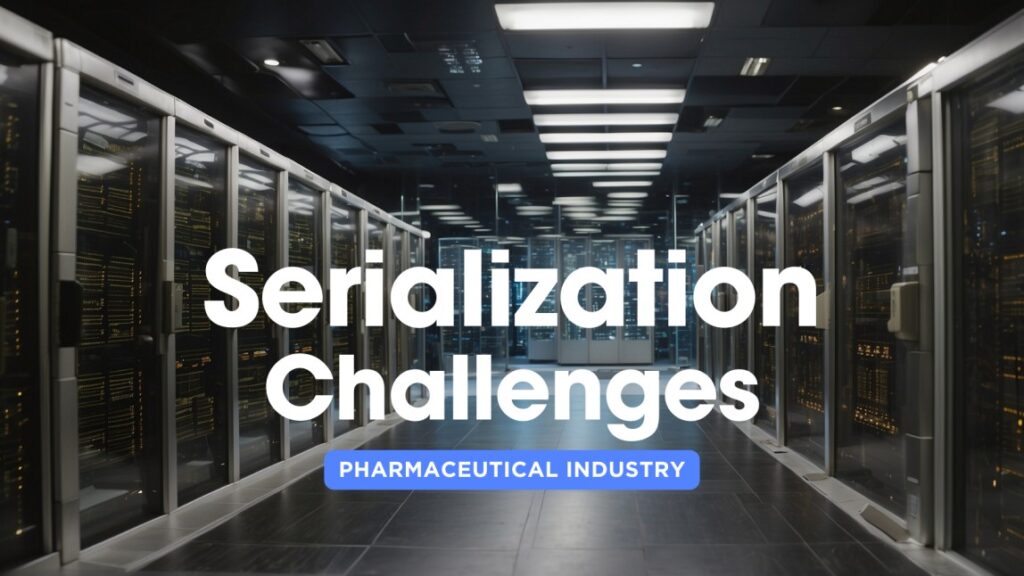Serialization in the Pharmaceutical Industry
Serialization is a critical component of the pharmaceutical industry’s efforts to enhance patient safety, combat counterfeit drugs, and comply with regulatory requirements. The process involves assigning a unique identifier to each unit of a drug product, enabling traceability throughout the supply chain. As global pharmaceutical markets expand and become more complex, serialization plays a pivotal role in safeguarding public health and maintaining the integrity of pharmaceutical products.
Importance of Serialization in the Pharmaceutical Industry
Serialization in the pharmaceutical industry offers a range of benefits that contribute to enhanced patient safety, regulatory compliance, and overall supply chain integrity. Here are some key advantages:
- Patient Safety: Serialization helps ensure the authenticity of pharmaceutical products, reducing the risk of patients receiving counterfeit or substandard medications. By providing a unique identifier for each drug unit, serialization enhances traceability and helps verify the legitimacy of the product.
- Counterfeit Prevention: One of the primary purposes of serialization is to combat the global issue of counterfeit drugs. Serialization makes it significantly more difficult for counterfeiters to produce and distribute fake pharmaceuticals, as each unit can be traced back to its origin.
- Regulatory Compliance: Many regulatory bodies, such as the U.S. Food and Drug Administration (FDA), the European Medicines Agency (EMA), the Indian Central Drugs Standard Control Organization (CDSCO), the Directorate General Of Foreign Trade and others, have implemented serialization requirements. Compliance with these regulations is essential for pharmaceutical companies to gain and maintain market access.
- Supply Chain Visibility: Serialization provides increased visibility into the entire pharmaceutical supply chain. Manufacturers, distributors, and regulatory authorities can trace the movement of drugs from production to distribution, facilitating efficient recall management and quality control.
- Efficient Recall Management: In the event of a product recall or quality issue, serialization allows for quick and precise identification of affected batches. This targeted recall capability minimizes the impact on patients and helps pharmaceutical companies manage recalls more efficiently.
- Brand Protection: Serialization helps protect pharmaceutical brands by preventing the infiltration of counterfeit or substandard products into the market. This safeguards the reputation of manufacturers and ensures that patients can trust the authenticity of the medications they receive.
- Market Access: Compliance with serialization regulations is often a prerequisite for market access in various regions. Pharmaceutical companies that invest in serialization systems position themselves to enter and maintain access to global markets.
- Data-Driven Decision-Making: Serialization generates a wealth of data throughout the supply chain. This data can be analyzed to gain insights into distribution patterns, identify potential issues, and optimize overall supply chain efficiency. Data-driven decision-making becomes a valuable asset for pharmaceutical companies.
- Improved Productivity: While there may be initial challenges in implementing serialization, the use of automated systems can streamline processes and reduce errors associated with manual tracking. This, in turn, can contribute to improved productivity and efficiency in pharmaceutical manufacturing and distribution.
- Enhanced Security: Serialization systems incorporate features such as tamper-evident packaging and anti-counterfeiting measures, adding an extra layer of security to pharmaceutical products. These features contribute to preventing unauthorized access and tampering during the product’s lifecycle.
- Global Standardization: Serialization encourages the adoption of global standards for product identification and data exchange. This standardization facilitates communication and collaboration among stakeholders in the international pharmaceutical supply chain.

Process of Serialization in the Pharmaceutical Industry
Serialization in the pharmaceutical industry involves a systematic process of assigning a unique identifier to each saleable unit of a drug product, allowing for traceability throughout the supply chain. This process aims to enhance patient safety, combat counterfeit drugs, and ensure regulatory compliance. The serialization process typically follows several key steps:
- Product Identification: Each unit of a pharmaceutical product is assigned a unique serial number or identifier. This unique identifier is often encoded in a 2D barcode or QR code and may include information such as the product serial number, batch number, expiration date, and other relevant details.
- Data Management System Implementation: Pharmaceutical companies implement robust data management systems to handle the vast amount of information generated by serialization. These systems are responsible for storing, managing, and verifying the accuracy of serialization data associated with each drug unit.
- Integration with Packaging Lines: Serialization is integrated into the packaging process, typically during the final stages before distribution. Specialized equipment, such as serialization printers and cameras, is installed on packaging lines to print and verify the unique identifiers on each product unit. This ensures that the serialization information is directly linked to the physical packaging of the product.
- Aggregation of Units: In addition to assigning unique identifiers to individual units, serialization may involve aggregating these units into larger packaging levels, such as cases or pallets. This aggregation helps maintain traceability at different levels of packaging, facilitating efficient recall management and supply chain visibility.
- Verification and Quality Control: Throughout the serialization process, there are verification steps to ensure the accuracy and quality of the serialized data. Automated systems are often used to check the printed codes for readability and correctness, minimizing the risk of errors.
- Data Exchange in the Supply Chain: Serialization data is shared across the pharmaceutical supply chain through global data exchange networks. This includes communication between manufacturers, distributors, wholesalers, and sometimes regulatory authorities. Standardized data exchange formats and communication protocols help ensure interoperability and consistency.
- Adherence to Regulatory Requirements: Pharmaceutical companies must comply with regional and international regulations governing serialization. This may involve meeting specific standards set by regulatory bodies, such as the U.S. FDA, EMA, CDSCO or other health authorities.
- Implementation of Tamper-Evident Packaging: Serialization is often accompanied by the implementation of tamper-evident packaging to prevent unauthorized access or tampering during the product’s lifecycle. This adds an additional layer of security to the serialized products.
- Training and Change Management: The implementation of serialization requires training employees at various levels within the organization. This includes operators working on packaging lines, quality control personnel, and IT professionals managing the data systems. Change management strategies are crucial to ensure a smooth transition to serialization processes.
- Continuous Monitoring and Improvement: After implementation, continuous monitoring and improvement of serialization processes are essential. This includes regular audits, system updates, and adapting to evolving regulatory requirements or technological advancements.

Challenges in Serialization
Implementing serialization in the pharmaceutical industry is a complex process that comes with its own set of challenges. While the benefits, such as enhanced patient safety and regulatory compliance, are significant, addressing the following challenges is crucial for successful implementation:
- Costs of Implementation: One of the primary challenges in implementing serialization is the substantial upfront costs involved. Pharmaceutical companies need to invest in specialized equipment, software, and staff training. The financial burden can be particularly challenging for smaller manufacturers.
- Integration with Existing Systems: Many pharmaceutical companies have established manufacturing and supply chain systems that were not initially designed with serialization in mind. Integrating serialization into existing infrastructure can be a complex and resource-intensive process, requiring careful planning and coordination.
- Global Harmonization and Regulatory Compliance: The pharmaceutical industry operates in a global landscape with varying regulatory requirements. Meeting the serialization standards of different countries and regions poses a challenge. Ensuring compliance with evolving regulations and maintaining a standardized approach across borders is critical.
- Interoperability Issues: Achieving seamless communication and data exchange between different stakeholders in the supply chain is a significant challenge. Interoperability issues may arise when integrating serialization systems from various vendors, making it essential to establish common standards for data exchange.
- Data Management and IT Infrastructure: Serialization generates vast amounts of data, and managing this data efficiently is crucial. Companies need robust IT infrastructure and data management systems to handle serialization information accurately, securely, and in real-time.
- Training and Change Management: Implementing serialization requires a workforce that is knowledgeable about the new processes and technologies involved. Training employees at all levels and managing the organizational change associated with serialization adoption are critical for successful implementation.
- Supply Chain Complexity: The pharmaceutical supply chain is intricate, involving multiple stakeholders, including manufacturers, distributors, wholesalers, and pharmacies. Ensuring that serialization is implemented uniformly across the entire supply chain can be challenging, especially when dealing with global distribution networks.
- Risk of Counterfeiting During Transition: During the transition to serialization, there is a risk that counterfeiters may take advantage of the dual systems (serialized and non-serialized) in place. This transitional period requires careful monitoring and enforcement to prevent the infiltration of counterfeit drugs.
- Data Security and Cybersecurity Concerns: Serialization involves the exchange of sensitive information across the supply chain. Ensuring the security of serialization data and protecting against potential cybersecurity threats is a continuous challenge for pharmaceutical companies.
- Scalability: As pharmaceutical companies expand their product portfolios or enter new markets, the serialization system must be scalable to accommodate increased production volumes and additional regulatory requirements. Scalability is crucial for long-term success.
- Technological Obsolescence: Serialization technology evolves over time. Companies must stay abreast of technological advancements to avoid the risk of investing in systems that may become obsolete in the near future.

Conclusion
In conclusion, serialization in the pharmaceutical industry stands as a pivotal and transformative measure, ushering in a new era of patient safety, supply chain transparency, and regulatory compliance. By assigning unique identifiers to each unit of a drug product, serialization enables precise tracking from manufacturing through distribution, offering an effective deterrent against counterfeit drugs and enhancing overall product integrity.
The implementation of serialization comes with its challenges, including initial costs, integration complexities, and the need for global standardization. However, the benefits far outweigh these challenges. Patients are better protected from the risks of counterfeit medications, regulatory compliance is assured, and pharmaceutical companies gain the tools to efficiently manage recalls and maintain the trust of consumers.
Serialization not only safeguards patient health but also fosters collaboration across the pharmaceutical supply chain. It necessitates interoperability and data exchange among manufacturers, distributors, and regulatory authorities, fostering a more connected and transparent industry.
In essence, serialization is more than a regulatory requirement; it is a strategic initiative that propels the pharmaceutical industry towards a future where patient well-being is paramount, counterfeiting is minimized, and global health standards are upheld with unwavering precision.
SS DATACODE® offers solutions for serialization requirements to pharmaceutical manufacturers and exporters in India and around the world.
For inquiry or demo please reach us at [email protected] or visit our Contact Us page


